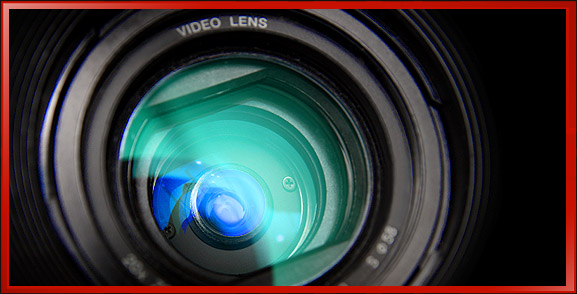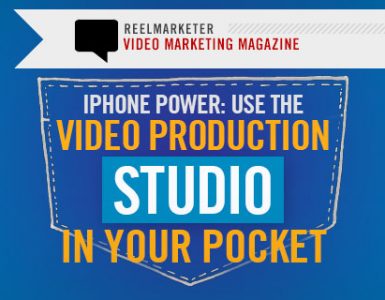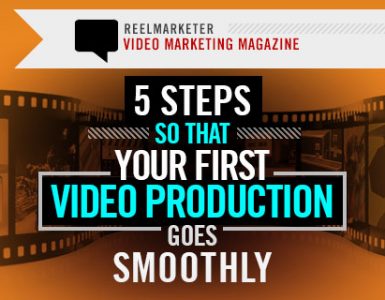Companies in the know are putting video as a marketing priority in their online marketing strategy. Why? To spell out some of what may seem obvious, video connects, builds incredible rapport and provokes viewers more strongly than traditionally available means of advertising. Drawing on tips, suggestions and strategies provided by experts we’ve interviewed here, we’ve expanded to a 10 part series broken into two separate releases!
1. No Excuses. Have a Video Marketing Strategy.
You need a video marketing strategy! As expert Nigel Abbott of Rippling Media and I have attested to, we’ve seen far too many fantastic videos doomed to wallow in “the-land-of-few-views” because of a lack of video marketing strategy. We’re not talking attempting ‘viral' here, we're talking about identifying goals and plotting out mile stone markers to track success.
Without a strategy, what’s the point of dedicating energy and funds to a video project if in the end it’s not put in front of viewers eager to click play? Habitually, successful video marketers will encourage a video marketing strategy – don't start without one!

Questions to ask to Develop this Habit: Why are you using video marketing vs other marketing methods? What goals will be accomplished with a particular online video? Who is your target market? Who is going to produce this video? What is your distribution strategy? What metrics are you choosing for ROI? Why so many questions? (Ignore the last one).
Relevant Read: Beginner Strategy: Starting Online Video Marketing
2. Use Plot. Make it Impressionable – yet honest.
When creating a video, it needs to have a thread of a plot or story running through it to keep people engaged. Also, if a video on YouTube is purely sales points, it'll likely be ignored. As Digital Strategist interviewee Chris Walts touched on in an earlier interview, while it may sound cliché, a story that will emote is vital in video marketing and promotion. As audiences, we’re accustomed to professional producers and filmmakers using a comfortably-predictable structure in presenting their stories. In simple terms, the story must have an introduction, rising action, and a fulfilling conclusion. In theatre, these are known as the three acts.
As audiences, we love good story telling as it let’s us shed our responsibilities for a time and live an alternate life. As an intangible as it may seem to have to quantify ‘plot’ along side ROI metrics for business video, don’t over look this – at least address this point during planning! If the audience doesn’t feel triggered positively (or negatively) and there’s no reaction, then there will be no true impression. Doomed to be unremarkable and unmemorable. The best video marketers create a story with their message as a habit.
Thoughts to Develop this Habit: Plots where you can suspend belief attract the target audience as the message resounds emotionally for the viewer. If you’ve done your research and have drafted up your digital marketing strategy, then you know your target’s demographics. With the right plot, these people may share your video with their trusted friends who likely have similar tastes. Bingo.
More Thoughts: A video shouldn’t take effort to understand – make your story easy to understand. There’s a reason that entertaining films stick to clichés. Audiences hate to admit it, but they love filmmakers for it – we KNOW who the good guy is, the love interest and the conflict. Filmmakers stick to their strategy and it works for everyone – get feedback from honest sources on your story before you commit.
Relevant Read: Strategist + Video, Tribal DDB’s Chris Walts Interview
3. Show them. Don’t just tell them.
While we’ll admit that good audio is very important for good video production, there’s a reason we’re called Reel Designer and not “AudioMarketer”. Video is mainly about show and tell. It is no surprise that sight that accounts for 80% of the perception for our environment. Couple sight with speech and music edited into a smartly-produced video for effect – we’re nearing 100% of the senses with one marketing medium! No wonder video marketing is so damn powerful.
Amazon.com has video reviews and testimonials from consumers of products sold on the site describing their experience with the product. Seeing and hearing the consumer showing and talking about the product is much more believable than some text from a written testimonial. The habit here is, using video, professionals often ask others to tell their story!
![]()
Tip: A technique I use when recording a testimonial for a company is to have no rehearsal! I'm hated for it in the moment, but it pays off: I don't feed the interviewee the question till the camera is rolling. Why? If the interviewee knows the questions in advance, they most often try to memorize an answer – which sounds scripted and fake when they receite on camera! But without rehearsal, we get that hint of awkwardness we see when average Janes and Joes are interviewed – perfect! That's what we want – it’s real. Authenticity is crucial for rapport building with those in the target demographic!
Develop This Habit: Like Amazon, get reviews or testimonials. This works fantastic if you’re talking about a service too, and not a product. Yes, just ask satisfied customers who you’ve worked with if they’re okay with speaking a little on camera. Go ahead, offer the potential interviewee a bribe to get in front of the camera. If it’s legal. Snacks and juice are a must on the shoot day too.
More Thoughts: Some examples of where testimonials work; What was interviewee’s experience interacting with Credit Union X? What did Mortgage Broker Y do above and beyond the call of duty for the interviewee? How did Product Z increase interviewee’s fulfillment?
4. Stay on Point – Structure your Message with a Script.
In Habit 1, when creating your video marketing strategy, you nailed down your goals, demographic, tone and plot. Now time to focus it's time to tell it.
In addition to the essentials of camera, lights and editing, a script must be created – and not be taken for granted. A scripted video doesn’t necessarily mean all the words of the narration are pre-written, rather, a script is an outline of the flow and messages the video will convey. At most basic, a blue print that can be referred to when needed. Even if a video has a tone of spontaneity, a general idea of flow and structure is crucial – have an idea of where you’re taking the viewer from the get-go.
Sadly, quite often businesses that are new to video focus on the technical components and not on the script. It is wise to make sure that the video development companies where you have entrusted creation of your marketing message understand your target and brand, and port that to a script. The stylistic approach will just be a waste if the ideas that you need to communicate don’t reach into the minds and hearts of your target customers. Expert video marketers will have a script on-hand to refer to throughout the production process – make it a habit!
Questions to Develop This Habit: Do you have a good understanding on concerns of your audience? What are the three leading points that you wish to convey to your potential customers? Is the language you use understandable and appealing to your clients?
Related Read: Story Trumps All: 5 Keys To Compelling Video Scripts
5. Be Social. Foster and Encourage Engagement.
Social sharing of a video is nearly as important as the view itself now! Expert marketers make it a habit to focus on keeping the view-to-share ratio as high as possible. Once the viewer gets interactive and involved with your video, the chances of attaining higher conversions increase. Plan sharing-friendly actions during your video strategy phase. Make sure your brand's social-network is ready to engage with viewers. Yes, be ready to engage in the key social networks you target for weeks, months or most ideally, in perpetuity. Professional marketers know, social is here to stay!

Get into the Habit: Start strategically engaging on your businesses’ social networks before the projects launches – comment, respond, follow, friend and share. Get out there there and mingle! At first it may seem quiet, like attending a conference and you know absolutely no one, but keep at it, pinging others and form real relationships. You must keep on top of these networks – if you’re not there to reply to comments, questions or criticism, be aware someone else may do it for you, and not with your best interests in mind!
Develop the Social Habit: After watching your video, what do you want that your viewers will do? How intense is your wish to involve your probable clients to your video? Which networks are you going to put your energy – are you going to keep it to the big four – Twitter, YouTube, Google+ and Facebook? Or are you going to go deep, and engage on Reddit.com, Digg.com and the like? Pick your battles – if you need guidance, ask below in the comments!








Hope that part 2 contains professionally captioning your video so it’s accessible the largest possible audience and utilizes the most effective means of SEO.